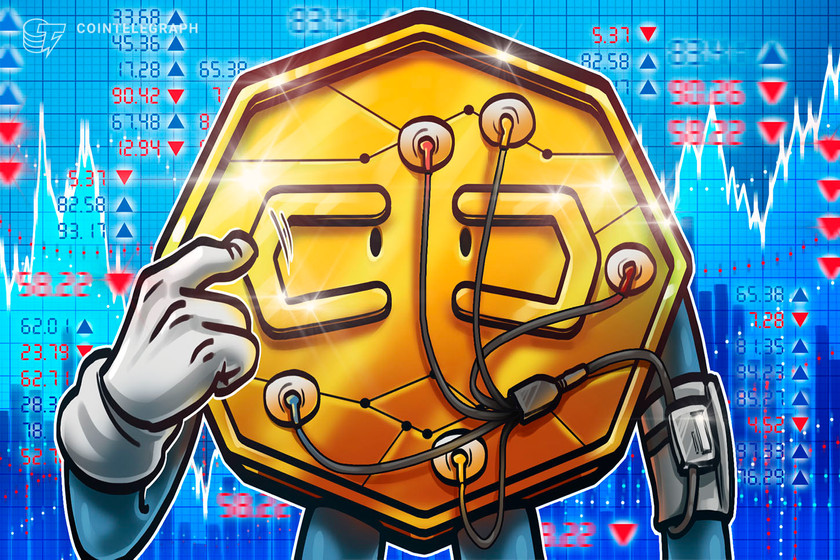How a single strategy crypto algorithm gained 176.31% while Bitcoin tanked 65% in 2022


Warren Buffett said that “What we learn from history is that people don’t learn from history.” Crypto traders can change that.
Before we get into the nitty-gritty of how one simple rule created the kind of insane return on investment noted in the headline — during one of the worst Crypto Winters in recent history — let’s be clear on one thing.
You can’t copy this now.
But anyone with access to Cointelegraph Markets Pro in 2022 could have. This is not a mere backtested strategy. It’s a real-life strategy — although you’re about to see historical results.
This is no longer a thought experiment or proof-of-concept; it is an actual way to make money in crypto trading.
For our purposes, it’s also a perfect way to illustrate how a simple strategy can work for real traders in real life — even during extreme market pullbacks.
So, let’s dig in. What could you do, right now, today, with this algorithm?
What does “Buy 85, Sell 80” mean?
Here’s the basic premise. In partnership with data firm The Tie, Cointelegraph Markets Pro has developed the VORTECS™ Score, an algorithmic determination of how bullish or bearish current trading conditions are for a given crypto asset.
The score is based on historical data, and it essentially sifts through the whole history of a coin or token looking for conditions that are similar to those it observes right now.
It’s looking for a variety of similarities and outliers — for instance, trading volume, recent price action, social sentiment and even the volume of tweets about that asset.
If it finds similarities, it looks at what happened next. Did the asset go up or down? How consistent was that movement? How significant was the rise or fall?
Combining all of these data points, Markets Pro creates the VORTECS™ Score, a dynamic and constantly evolving evaluation of the current trading conditions for each supported asset. The higher the score, the more bullish the outlook — and the more confident the algorithm is.
Conversely, a very low score is bearish (with equal confidence). A neutral score of 50 means the algorithm sees no significant correlation between current conditions and past price performance.
The Markets Pro platform offers a whole range of strategies to traders.
A “Buy 85, Sell 80” strategy means that a trader can buy an asset that crosses the 85 score, which is considered strongly bullish. And then “sell” the asset once it goes below the score of 80.
Of course, this is happening live on an exchange. Or a trader can simply “paper trade” the asset to test the algorithm out.
For instance — if Solana’s SOL crossed 85, and was the sole asset with that high score, the trader could place a percentage of their current portfolio into SOL. But if Binance’s BNB then crossed 85 as well, the trader could allocate some other percentage of their portfolio to BNB. Or not. The choice is theirs.
So why is this valuable to know?
The point here is to evaluate whether the VORTECS™ algorithm is good at its job.
When it sees bullish conditions, is it right more often than not? When the score goes up, do prices generally increase? Obviously, the answer is yes.
The Buy 85, Sell 80 is only one strategy. There are other strategies that have created a massive return on investment in 2022.
For instance, Buy 90, Sell 85. That one is sitting on gains of +96.89% in 2022. Even stronger strategies include:
Buy 90, Sell 90 | +159.15%
Buy 85, Sell 75 | +102.65%
In fact, Bitcoin (BTC) returned -65% since the start of 2022 and Ether (ETH) fared no better with returns of -68% while VORTECS™-based strategies averaged +81.50% across the board beating the pants off BTC and ETH respectively.
And that signals that VORTECS™ is working correctly. It is — in general, over time — proving that historical trading conditions for digital assets can be a useful gauge for the current health of that asset.
In other words, a high VORTECS™ Score has a proven correlation to price appreciation. Not in every instance, not for every asset… but in general, the results in 2022 have made a compelling case.
Warren Buffett (perhaps paraphrasing Georg Wilhelm Friedrich Hegel) once said that “What we learn from history is that people don’t learn from history.”
(As a crypto skeptic, he might want to revisit his stance.)
That’s what the VORTECS™ Score is all about. Learning from history. And that’s why a real return of 176.31% right in the middle of one of the worst Crypto Winters in the market’s history is important.
It tells us we’re looking at the right history.
Cointelegraph Markets Pro is available exclusively to members at $99 per month with a 100% satisfaction guarantee. We are offering you access to the only crypto-intelligence platform in the world that can provide you with the exact same trading alerts as institutions, and hedge funds in real time… Before this information becomes public knowledge.
Cointelegraph is a publisher of financial information, not an investment adviser. We do not provide personalized or individualized investment advice. Cryptocurrencies are volatile investments and carry significant risk including the risk of permanent and total loss. Past performance is not indicative of future results. Figures and charts are correct at the time of writing or as otherwise specified. Live-tested strategies are not recommendations. Consult your financial advisor before making financial decisions.
All ROIs quoted are accurate as of 8:00 am UTC on Nov. 17, 2022



